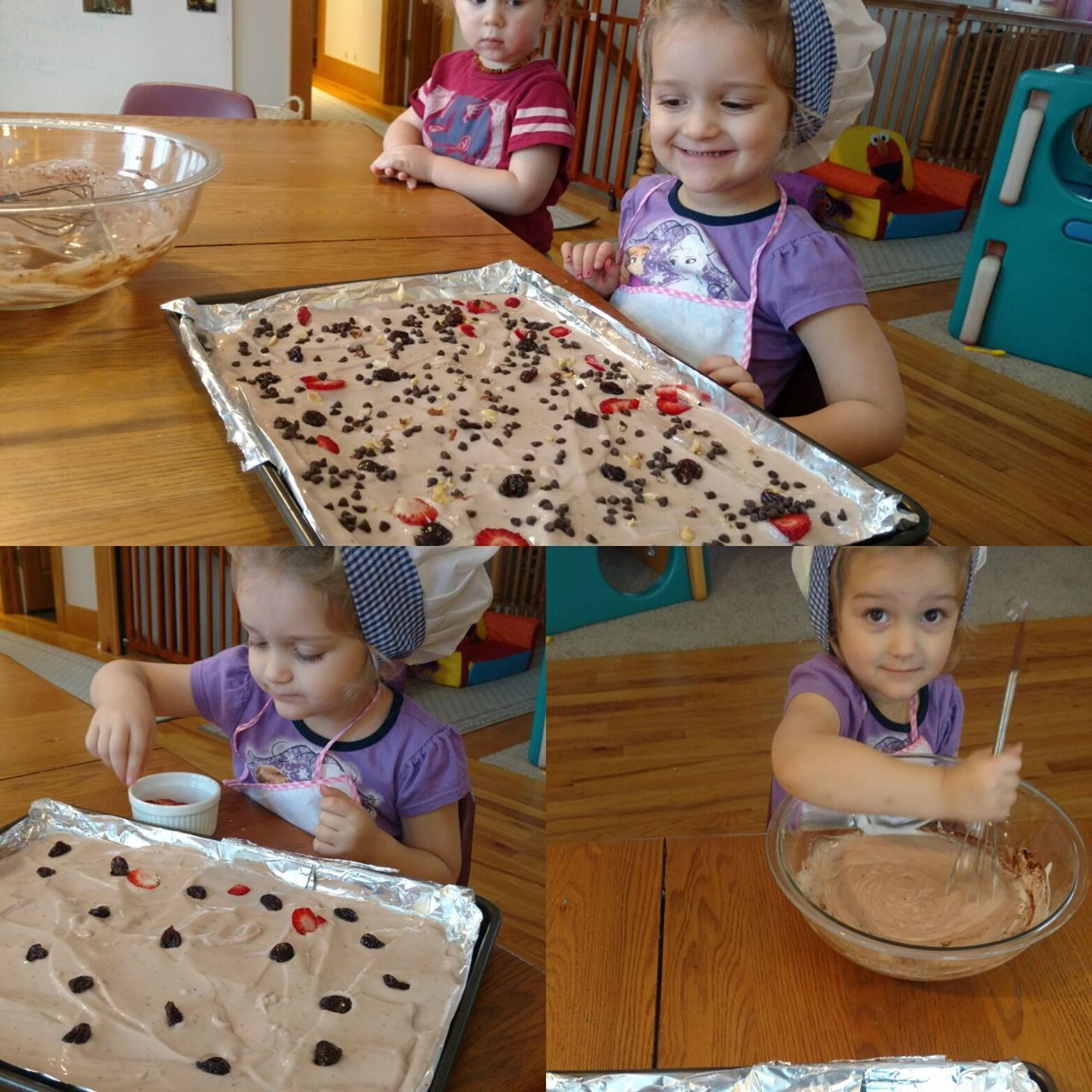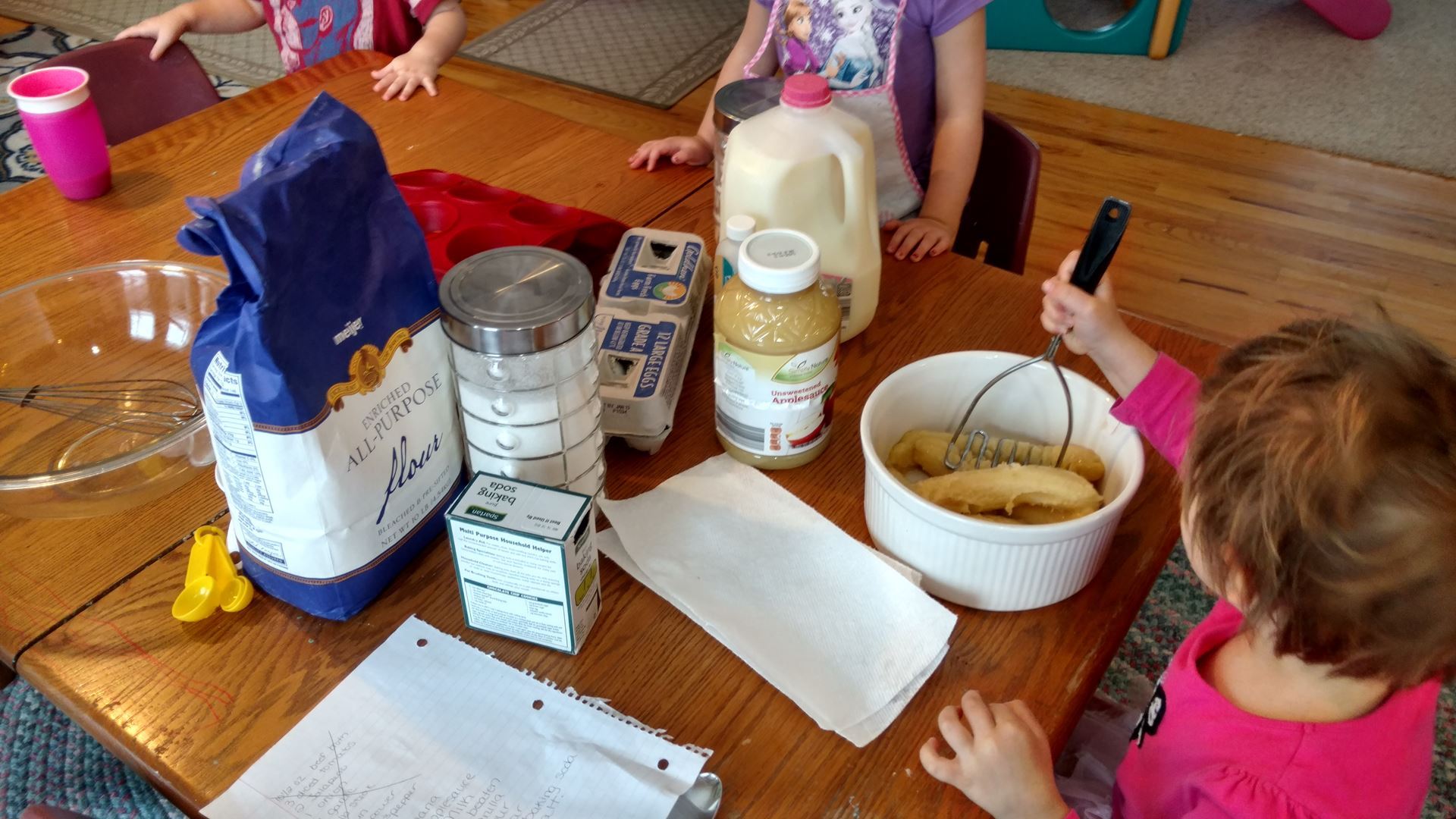Guest blogger Ashley Baker is the director of in-home daycare Doodle Play in Traverse City, Michigan. She shares her experiences engaging young children in healthier eating habits.
I would be lying if I said our day doesn't revolve around food.

Our schedule revolves around when we eat, how long it takes to prep meals and the cleanup after. We have some of our best conversations when we are all seated together eating meals.
At my daycare located in Northern Michigan, we have two large gardens and a chicken/duck area that provides us with lots of fresh fruits, veggies and eggs. The problem for us isn't using the fresh produce when in season, it is making sure we use that produce throughout the year and incorporate it into as many healthy meals for the children as possible.
To make healthier meals and make our produce last longer, we started incorporating meal prep days into our routine. The kids and families really took to it! We have less produce going to waste and the kids eat better meals throughout the year, thanks to our thoughtful meal preparation and planning.
 My daycare kids love smoothies, and they are a great way to use excess produce. We make and freeze smoothie packs with spinach and berries from the garden. We use organic red tape bananas, too – we simply freeze the peeled bananas and throw them in the smoothie packs. We even freeze avocados in ice cube trays. Smoothies are versatile and can be enjoyed for breakfast or snacks.
My daycare kids love smoothies, and they are a great way to use excess produce. We make and freeze smoothie packs with spinach and berries from the garden. We use organic red tape bananas, too – we simply freeze the peeled bananas and throw them in the smoothie packs. We even freeze avocados in ice cube trays. Smoothies are versatile and can be enjoyed for breakfast or snacks.
But it doesn't stop at smoothies. Last week the children and I baked four dozen banana bread muffins. We mashed, measured, counted, mixed and baked. Once cooled we froze the muffins individually (six per bag) and put them in the freezer. We took the muffins out to defrost the night before, so the children ate a homemade breakfast without a lot effort that morning.
We use bell peppers from the garden for several recipes including fajitas. We make twice baked potatoes and our tomatoes are made into sauces – both easy to freeze and serve later.
When we're finished with a snack or meal, the children put their food into the compost. Our chickens and ducks pick through the compost, turning it and fertilizing it. This in turn cuts our cost on poultry feed, gives us a rich fertilizer and cuts down on our food waste.
It's important that children not only see where their food comes from, but also where their food goes. Yes, eggs come from chickens. But using the eggs in muffins or scrambled eggs takes it another step further and helps children understand how natural resources become ingredients for the nutritious foods we eat. It's important to teach these sustainable food habits now, as children discover how our needs are interconnected with nature.
My hope is that making these connections now will lead to better eating habits, a closer connection and respect for our food and understanding about where it comes from. I hope that the children who call this their second home will grow to make more sustainable decisions about food.
.png)